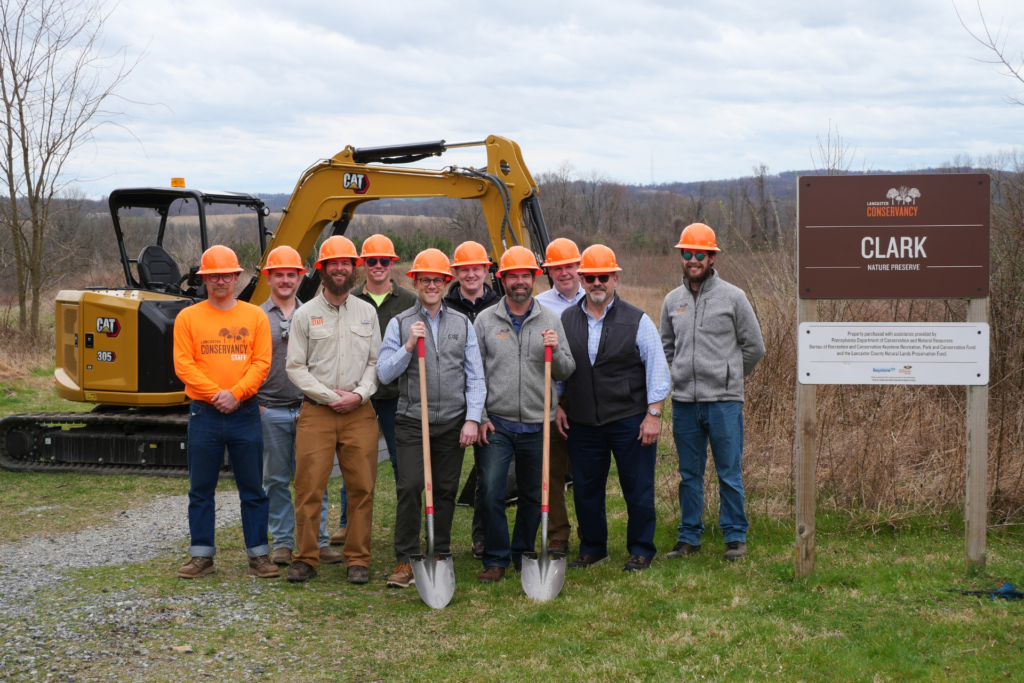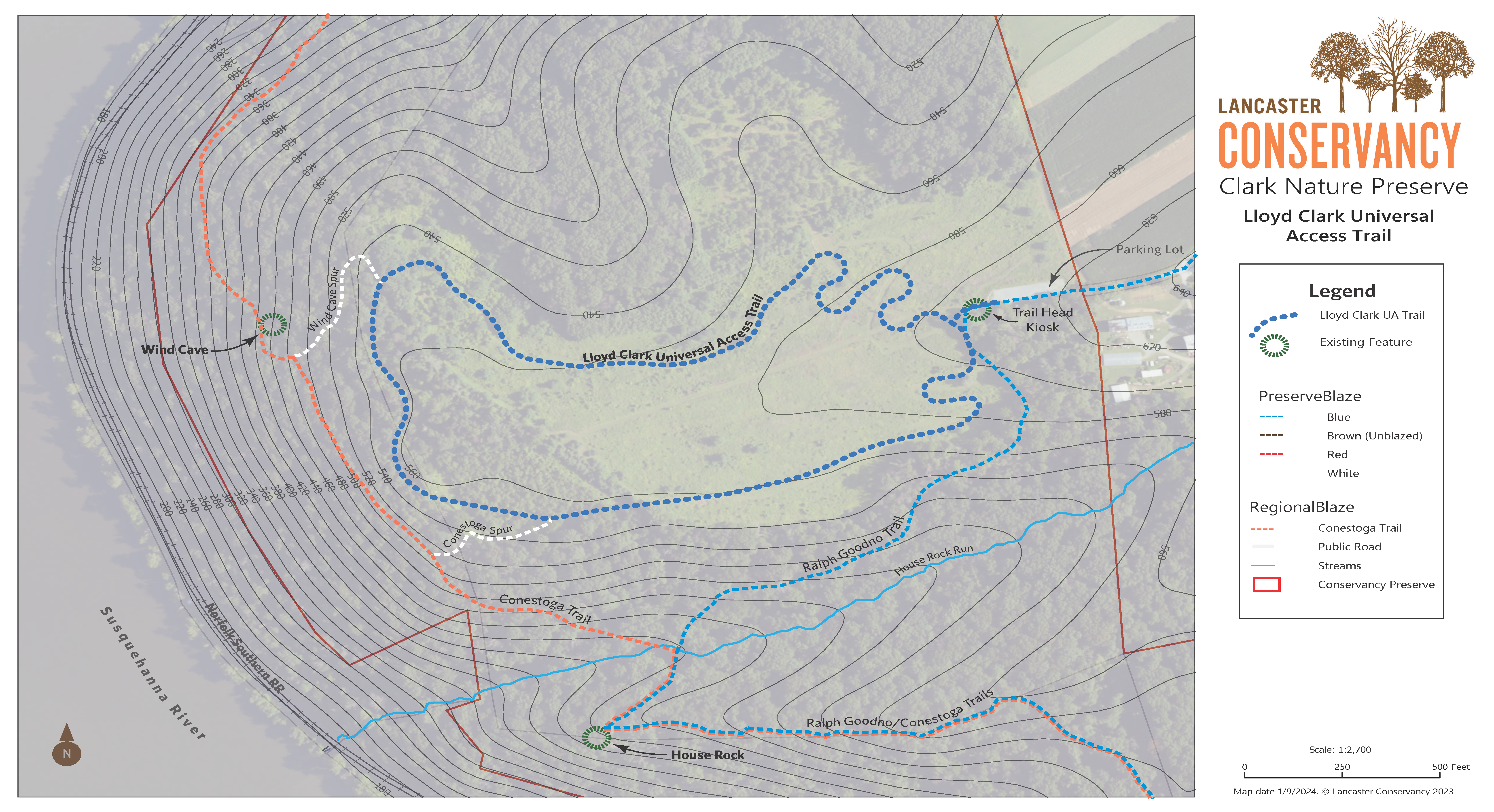The Lancaster Conservancy is excited to have broken ground on a new universal access (UA) trail at Clark Nature Preserve, which will provide opportunities for community members with mobility concerns or those who use wheelchairs, walkers, strollers, or other mobility devices to explore this nature preserve and spend time outdoors. The Conservancy will name this soon-to-be built trail at Clark Nature Preserve in memory of the Clark Associates’ founder, Lloyd Clark, and in recognition of the Clark Foundation’s historic investments in the Conservancy’s land protection and stewardship work through the Protect & Restore Campaign.
“Access to nature is a top priority for the Conservancy whenever we build new trails. Some preserves and their terrain lend themselves to universal access, and we are grateful that the Clark family and foundation helped drive this vision. What is already one of our most ecologically diverse preserves will soon be open for community members of all mobilities to explore and experience nature,” stated Fritz Schroeder, President and CEO of the Conservancy.
The Lloyd Clark Universal Access Trail will be an easy-grade hiking trail that blends in seamlessly with the existing meadow terrain at Clark Nature Preserve. It will have a durable crushed stone surface that will accommodate all users and all types of mobility assistive devices from canes and walkers to manual or powered wheelchairs and baby strollers. It will give everyone an unparalleled opportunity to experience a unique Susquehanna Riverlands successional meadow and its native wildlife as well as an expansive view into the York River Hills.
“The Lloyd Clark Trail represents the Conservancy’s continued commitment to ensuring equity in access to natural lands. The trail will provide for increased mobility upon the universal access loop but it will also serve as an opportunity for visitors to further challenge themselves by connecting into the entire trail system of the Clark Nature Preserve including the Goodno Trail and the Conestoga Trail,” said Brandon Tennis, the Conservancy’s Senior Vice President of Stewardship.
The development of this UA trail took over three years of dedicated focus to get to this stage. The Conservancy and our engineering partner, C.S. Davidson, Inc., performed a significant amount of regulatory research, field exploration, field survey, engineering analysis, and final engineering to get to this point – when we are ready to begin construction.
As is typical of this type of work, there will be some construction dust and equipment noise while the work is in progress during the summer of 2024. The parking lot at the end of House Rock Road and the nature preserve will remain open during preparation and construction, with occasional limitations and restrictions as needed. Please be cautious of moving equipment during this time.
During the installation of the trail, preserve visitors may notice: mandatory erosion and sediment pollution control devices in the form of filter barriers and infiltration berms to prevent soil movement from potential erosive rain events; brush clearing and earth moving to grade the trail in properly; a course-stone construction entrance at the lower end of the existing parking lot along with some minor trail realignment to ensure separation of and safety for Conservancy visitors from the construction activity; the placement and rolling of crushed stone onto the base of the trail bed; and finally, placement and rolling of the trail surface of fine crushed stone.
Ultimately, when construction of the trail is completed this summer, the Conservancy will have taken another step toward our goal of providing greater access to nature for everyone in our community!
“This is exciting for me because we are helping not only an underserved portion of our community, but all of those in our community who may not be ready for a more strenuous hike to experience the untamed beauty of Lancaster County,” said the Conservancy’s Stewardship Project Manager Mark Heller.
We want to thank the Clark Family, the National Park Service, and the PA DCNR for making this project possible. We also want to thank Penn Trails for the initial feasibility study. We want to give a big thank you to C.S. Davidson, Inc. of York for their role in engineering, permitting, construction bidding, and construction inspection services, and a big congratulations to Kinsley Construction for being the winning bidder and with whom we look forward to a successfully completed project.


